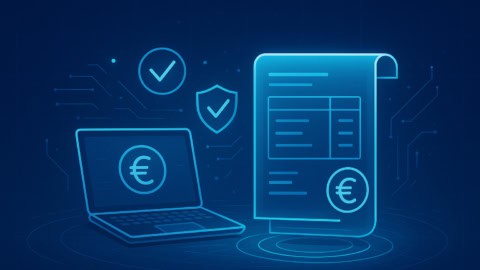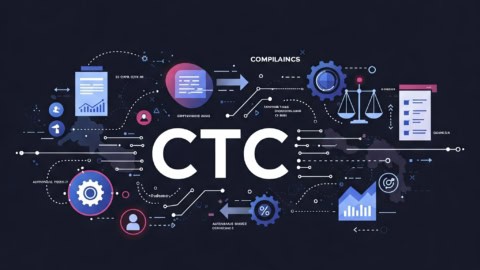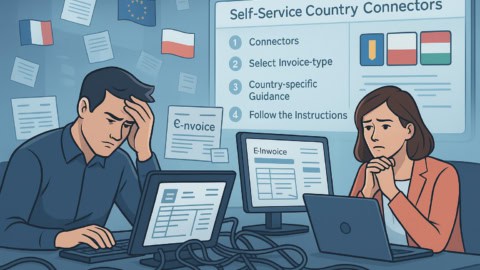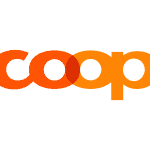The recent proliferation of e-invoicing mandates across the globe is transforming the way businesses handle communicate with one another. From the rise of Continuous Transaction Controls (CTCs) to the adoption of interoperability frameworks like Peppol, the landscape of e-invoicing is advancing at an unprecedented pace.
To explore the latest trends and challenges in this space, we sat down with ecosio ‘s E-invoicing Product Manager, Chris Newman. In this interview, Chris shares his expert insights into the future of e-invoicing, including how businesses can prepare for upcoming e-invoicing mandates, the role of emerging technologies, and the importance of global cooperation in shaping the future of electronic invoicing systems.
————————————————————————
How do you expect e-invoicing to evolve over the next few years?
The global e-invoicing landscape is undergoing significant transformation. In addition to a continued expansion of e-invoicing mandates, one key trend I expect to continue is the adoption of Continuous Transaction Controls (CTCs). These help governments to combat VAT fraud and tax evasion by requiring real-time or near-real-time reporting of the invoice or a subset of transactional data to central platforms.
I also expect interoperability to become a key concern, as more countries mandate electronic invoicing across B2B, B2G, and B2C transactions. This trend is driving the adoption of global standards and frameworks such as Peppol, which facilitates seamless cross-border transactions and ensures compliance with varying national requirements.
Last, but not least, we should see the integration of e-invoicing with broader compliance initiatives, such as e-transport systems, which track the movement of goods to ensure accurate VAT reporting and delivery verification. Countries like Romania, Serbia, and Hungary are already implementing these systems, and I expect others to follow as we move towards more comprehensive compliance frameworks.
Will emerging technologies have a role to play in e-invoicing processes moving forward?
New technologies will undoubtedly play a significant role in enhancing e-invoicing processes moving forward. At ecosio, for example, we are already leveraging AI to enhance our solutions and reduce risk for clients. Meanwhile, governments are also recognising the potential for AI to optimise compliance processes, with some already using AI to identify fraud that would previously have taken weeks to uncover. As is always the case with integration of AI, however, it must be managed carefully if accuracy is to be maintained.
Transitioning to cloud-based solutions is also transforming how businesses handle e-invoicing. Modern cloud architecture offers scalability, instant accessibility and capacity for real-time processing, providing seamless integration between financial systems and enhancing transactional transparency.
Do you anticipate that governments will expand B2B automation requirements beyond invoicing processes?
Yes, I think this is certainly going to happen in many countries moving forward. In fact, several countries have already made progress in this direction. For instance, the United Kingdom, besides e-invoices, also mandates electronic purchase orders and advanced shipping notices for medical suppliers engaging with healthcare providers. Similarly, Italy mandates the use of electronic purchase orders in the public healthcare system.
As already mentioned, e-transportation initiatives are also on the rise, which involves the monitoring and tracking of high fiscal goods during transit. Therefore we can expect to see more countries introducing their own initiatives.
Is there any hope for a universal e-invoicing standard?
It’s certainly true that we’re heading in the right direction. Standards like EN 16931, initially developed for B2G invoicing under EU Directive 2014/55, are now expanding into the B2B sphere across Europe and even countries like Saudi Arabia, United Arab Emirates, Singapore and Australia. Similarly, interoperability frameworks such as Peppol are gaining significant traction. However, full global alignment remains highly improbable due to proven, established systems that have been in place for a long time, which is the case in Latin America. While e-invoicing may become more unified in some regions, we won’t see a universal standard emerge any time soon.
What role will global cooperation play in the further development of e-invoicing?
If e-invoicing is to become as simple and efficient as possible, global cooperation is essential. While developing a system specifically to tackle local needs may have seemed logical for the first countries to implement mandatory e-invoicing, this quickly led to fragmentation and overly complicated cross-border transactions.
Thankfully, however, recent years have seen significant steps taken towards international cooperation. In particular, initiatives like the EU’s VAT in the Digital Age (ViDA) and the Peppol International Invoice (PINT) exemplify the potential of collaboration. By adopting the EN 16931 standard, ViDA aims to harmonise digital reporting across the EU, facilitating seamless cross-border transactions while enhancing automation and reducing administrative burdens for businesses. Meanwhile, PINT bridges global standards with local requirements, as demonstrated by its adoption in countries such as Japan (PINT-JP), Malaysia (PINT-MY), Singapore (PINT-SG), and Australia & New Zealand (PINT-A-NZ). These efforts not only promote efficiency but also highlight the necessity of international alignment to ensure the sustainable development of e-invoicing systems worldwide.
What are the biggest challenges businesses face when integrating and upgrading e-invoicing systems?
One of the primary challenges is being able to extract the required information from multiple systems. Many multinational organisations utilise a variety of ERP systems, which makes data identification and retrieval extremely difficult. Once the data is located, businesses must generate compliant invoices and establish connections with solution providers capable of handling requirements and meeting e-invoicing mandates across multiple markets.
Another major challenge is ensuring the data meets the necessary quality standards for these systems to function effectively. While solution providers can help to some extent here, issues concerning data quality will require significant internal commitment to resolve.
What lessons can businesses learn from early adopters of e-invoicing systems?
From what I have seen, one of the most crucial mistakes businesses make when implementing an e-invoicing solution is failing to assemble a cross-functional team with expertise in IT, finance, and tax. Without the input of experts in each of these areas, projects are much more likely to encounter challenges down the line.
Many early adopters – particularly those operating cross-border – also underestimated just how complicated managing e-invoicing internally would become, as e-invoicing mandates grew steadily more numerous and complex. Thankfully, partnering with a specialised solution provider can alleviate much of the burden, from handling country-specific connectivity requirements to ensuring compliance with technical specifications.
How important is employee training in the successful implementation of e-invoicing?
It’s crucial! While solution providers like ecosio manage most e-invoicing processes, businesses must ensure their internal teams have the expertise to manage responsibilities within their ERP systems. This includes understanding required data fields, output formats and transmission protocols like APIs or AS4.
Trained employees are also essential for managing e-invoicing workflows and addressing unique use cases. Without this internal knowledge, businesses may face significant challenges during implementation and will find it much harder to achieve long term success.
Do you have any advice for managing the increasing complexity of e-invoicing mandates?
My first recommendation would be to prepare for upcoming e-invoicing mandates and requirements as soon as new regulations are announced… if not before! Implementation of a new solution can be a lengthy process, particularly for larger companies with multiple ERP systems. Plus companies also need to understand technical compliance demands and build a capable project team. Proactively adapting systems in advance of upcoming mandates not only eliminates the danger of non-compliance penalties, which can be very severe in some jurisdictions (such as jail time for CEOs in Malaysia), but also provides a competitive advantage.
My second recommendation would be to invest in external e-invoicing expertise. As more and more countries introduce e-invoicing mandates, it is becoming increasingly unrealistic for internal teams at multinational companies to stay on top of constantly changing requirements. External providers can prove invaluable in helping to minimise risk and futureproof e-invoicing processes.
























